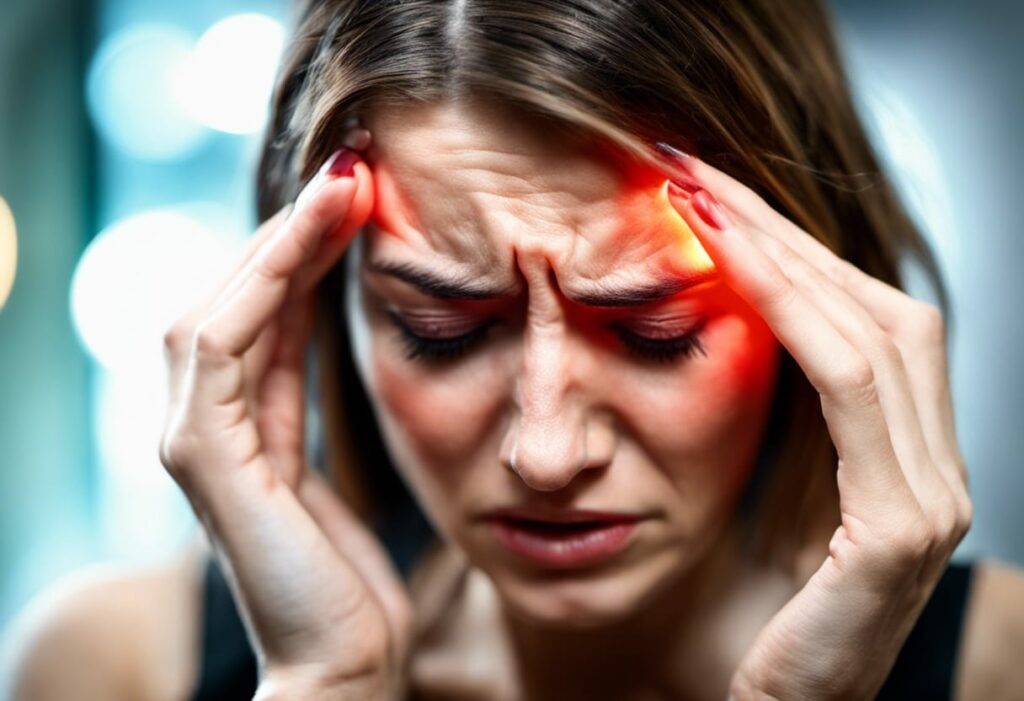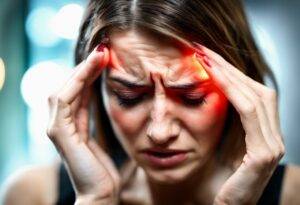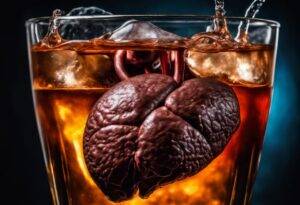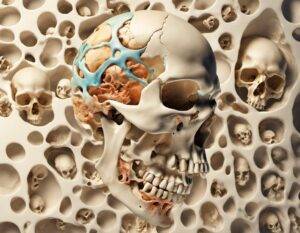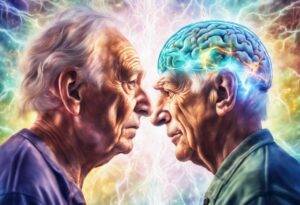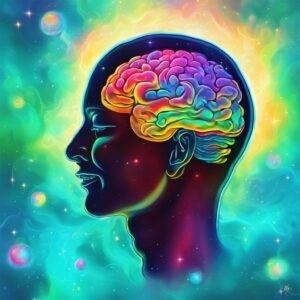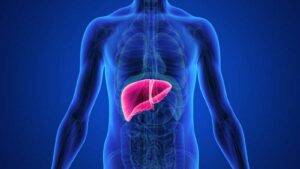Chronic pain, an intricate web of physical and emotional torment, affects millions around the world, weaving its way through every aspect of daily life. It is relentless, often leaving individuals feeling trapped in a cycle of suffering. But behind the veil of despair lie rays of hope, fueled by the latest scientific studies, medical advancements, and treatment options dedicated to unraveling the enigma of chronic pain.
In this blog post, we aim to shed light on this pervasive issue by addressing 60 key questions and providing insightful answers that will empower those afflicted with chronic pain to understand and manage their condition. From the causes and types of chronic pain to the latest breakthroughs in pain management, join us on a journey of exploration and discovery.
Throughout this post, we will dive into the latest scientific studies that have unraveled the mysteries surrounding chronic pain, unveiling cutting-edge medical advancements that offer newfound hope for relief. From groundbreaking research on the neurobiology of pain to innovative treatment options like spinal cord stimulation and regenerative medicine, we will explore the frontier of pain management.
But beyond the medical aspects, we will also delve into the psychological impact of chronic pain and the importance of addressing its emotional toll. We will reveal the power of mindfulness, cognitive-behavioral therapy, and other coping strategies that have shown promising results in alleviating pain and enhancing overall well-being.
60 Masterfully Explained Questions About Chronic Pain: An In-Depth Medical Resource
1. What is chronic pain?
Chronic pain is defined as persistent pain that lasts for an extended period of time, typically beyond the normal healing time of an injury or illness. Unlike acute pain, which serves as a warning sign and usually resolves as the underlying cause heals, chronic pain persists for weeks, months, or even years. It can significantly impact a person’s physical and emotional well-being, leading to limitations in daily activities and reducing quality of life.
Bonus Fact: Chronic pain affects around 20% of people worldwide, making it a prevalent and challenging condition to manage.
2. What are the common causes of chronic pain?
The common causes of chronic pain can vary widely and may stem from various underlying conditions or injuries. Some of the typical causes include musculoskeletal issues such as arthritis, fibromyalgia, or back pain, nerve damage or neuropathy, past injuries or surgeries, certain medical conditions like cancer or multiple sclerosis, and persistent headaches or migraines. Psychological factors, such as stress, anxiety, and depression, can also contribute to the development or amplification of chronic pain.
Bonus Fact: Studies have shown that chronic pain is more common in women compared to men, and it tends to increase with age.
Just a little heads up: some of the links on this site may be affiliate links, which means if you make a purchase through them, we might get a little kickback. But don’t worry, it won’t cost you a cent extra! Think of it as the universe secretly thanking us for helping you find a great deal. Your support keeps the good vibes flowing and this site growing.
3. How is chronic pain diagnosed?
Diagnosing chronic pain requires a comprehensive evaluation by a healthcare professional. The diagnosis typically involves a thorough medical history review, physical examination to assess the area of pain, and sometimes imaging tests (like X-rays, CT scans, or MRI) or laboratory tests to identify or rule out potential underlying causes. Since chronic pain is a highly subjective experience, doctors rely heavily on patients’ self-reported symptoms and their impact on daily life for an accurate diagnosis.
Bonus Fact: Chronic pain often leads to a significant economic burden, costing billions of dollars each year in healthcare expenses and lost productivity.
4. What are the different types of chronic pain?
Chronic pain can manifest in various forms, and understanding the different types can help in tailoring appropriate treatment approaches. Some of the common types of chronic pain include neuropathic pain, which arises from damage or dysfunction of nerves; nociceptive pain, resulting from tissue damage or inflammation; centralized pain, such as fibromyalgia, where the nervous system becomes hypersensitive to pain signals; and musculoskeletal pain, which involves the muscles, bones, tendons, or ligaments.
Bonus Fact: Phantom limb pain, where individuals experience pain in a non-existent limb after amputation, is a particularly intriguing type of chronic pain that emphasizes the complexity of the nervous system.
5. What are the symptoms of chronic pain?
The symptoms experienced with chronic pain can vary widely depending on the underlying cause, but common symptoms include persistent or recurring pain, aching or stiffness, reduced mobility or difficulty performing daily tasks, fatigue, sleep disturbances, mood changes (such as irritability or depression), and concentration or memory difficulties. Since chronic pain is multifaceted and can affect different aspects of life, it is important to address both the physical and psychological aspects of the condition for comprehensive management.
Bonus Fact: Chronic pain can be influenced by environmental factors, and certain weather conditions, changes in temperature, or atmospheric pressure may aggravate symptoms in some individuals.
6. How does chronic pain affect daily life?
Chronic pain can greatly impact daily life by interfering with a person’s ability to perform everyday tasks, work, socialize, and even sleep. It can lead to decreased productivity, increased stress, anxiety, and depression. Simple activities like getting dressed or cooking can become daunting and exhausting. Chronic pain can also cause difficulty concentrating and focusing on tasks, leading to impaired cognitive function. Overall, it can significantly reduce a person’s quality of life and make even the simplest activities a challenge.
Bonus Fact: Studies have shown that chronic pain can physically change the brain by altering its structure and function. This highlights the importance of early intervention and effective pain management strategies.
7. Are there any risk factors for developing chronic pain?
Numerous risk factors can contribute to the development of chronic pain. Some common risk factors include having a history of certain medical conditions like arthritis, fibromyalgia, or nerve damage. Other factors include experiencing trauma or injury, undergoing surgery, having a family history of chronic pain, being overweight or obese, and having poor posture or ergonomics. Additionally, psychological factors such as stress, anxiety, and depression can also increase the likelihood of developing chronic pain.
Bonus Fact: Did you know that women are more likely to experience chronic pain compared to men? Multiple factors, including hormonal differences and a higher prevalence of certain conditions like fibromyalgia, contribute to this gender disparity.
8. Can chronic pain be prevented?
While chronic pain cannot always be completely prevented, there are steps that can be taken to minimize its occurrence or reduce its severity. Maintaining a healthy lifestyle, including regular exercise, a balanced diet, adequate sleep, and stress management, can help prevent certain underlying conditions that may lead to chronic pain. Good ergonomics at workstations and proper body mechanics during physical activities can also reduce the risk of developing pain. In cases where there are known risk factors, early intervention and appropriate treatment can prevent acute pain from progressing to chronic pain.
Bonus Fact: Engaging in regular physical activity can help release endorphins, which are natural pain-relieving chemicals produced by the body. This means that exercise not only contributes to overall well-being but can also help manage chronic pain.
9. What are the available treatment options for chronic pain?
Treatment options for chronic pain can vary depending on the underlying cause and individual circumstances. They can include a combination of medications, physical therapy, psychological therapy, interventional procedures, and alternative therapies. Medications commonly used for chronic pain management may include nonsteroidal anti-inflammatory drugs (NSAIDs), opioids, antidepressants, and anticonvulsants. Physical therapy can help improve strength, flexibility, and mobility, while psychological therapies like cognitive-behavioral therapy can address the emotional and psychological aspects of chronic pain. Interventional procedures, such as nerve blocks or spinal cord stimulation, may be recommended in some cases. Additionally, alternative therapies like acupuncture, massage, and mindfulness-based practices have also shown promise in helping manage chronic pain.
Bonus Fact: It is estimated that over 50 million adults in the United States alone suffer from chronic pain, making it a widespread issue that requires comprehensive and personalized treatment approaches.
10. What are the goals of chronic pain treatment?
The primary goals of chronic pain treatment are to reduce pain intensity, improve physical functioning, enhance overall quality of life, and minimize the impact of pain on mental and emotional well-being. Achieving these goals may involve a multidisciplinary approach, addressing both the physical and psychological aspects of chronic pain. Treatment plans are tailored to individual needs and may focus on pain management, rehabilitation, functional restoration, and self-management strategies. The ultimate aim is to empower individuals to actively participate in their own pain management and regain control over their lives.
Bonus Fact: Many chronic pain management approaches emphasize a holistic approach, recognizing the intricate connections between physical, mental, and emotional well-being. This integrated approach helps provide comprehensive care and support to individuals living with chronic pain.
11. How effective are different treatment options for chronic pain?
The effectiveness of different treatment options for chronic pain can vary depending on various factors such as the underlying cause of pain, individual response, and the specific treatment chosen. However, there are several options available that have shown promising results in managing chronic pain. Medications, such as nonsteroidal anti-inflammatory drugs (NSAIDs), opioids, antidepressants, and anticonvulsants, are commonly used to alleviate pain. Additionally, treatments like physical therapy, acupuncture, nerve blocks, and spinal cord stimulation have been found to provide relief for many individuals. It is important to work closely with a healthcare professional to determine the most effective treatment plan for each person’s unique situation.
Bonus Fact: Did you know that the use of acupuncture for pain relief dates back thousands of years? It is a traditional Chinese medicine practice that involves inserting thin needles into specific points on the body, which is believed to stimulate the flow of energy and promote healing.
Just a little heads up: some of the links on this site may be affiliate links, which means if you make a purchase through them, we might get a little kickback. But don’t worry, it won’t cost you a cent extra! Think of it as the universe secretly thanking us for helping you find a great deal. Your support keeps the good vibes flowing.
12. Are there any potential side effects of chronic pain medications?
Chronic pain medications, like any other medications, can have potential side effects. Common side effects of opioids, for example, may include drowsiness, constipation, nausea, and decreased respiratory rate. Nonsteroidal anti-inflammatory drugs (NSAIDs) may lead to gastrointestinal issues like stomach ulcers or bleeding, and long-term use can affect kidney function. Antidepressants and anticonvulsants commonly prescribed for chronic pain may cause side effects such as dizziness, dry mouth, or weight gain. It is crucial for healthcare providers to carefully assess each patient’s medical history, analyze potential risks, and closely monitor the use of medications to minimize the occurrence of side effects.
Bonus Fact: Did you know that some chronic pain medications can also cause medication overuse headaches? These headaches occur when the body becomes dependent on the pain medications, and their withdrawal leads to a rebound headache.
13. Are there any non-pharmacological treatments for chronic pain?
Yes, there are non-pharmacological treatments for chronic pain that can be effective in managing and mitigating pain. These alternative treatments aim to reduce pain and improve quality of life without relying solely on medications. Some examples include physical therapy, chiropractic adjustments, acupuncture, massage therapy, biofeedback, cognitive-behavioral therapy (CBT), relaxation techniques, and mindfulness meditation. These approaches often focus on improving physical function, promoting relaxation, reducing stress, and teaching coping strategies to help individuals better manage their pain.
Bonus Fact: Research has shown that mindfulness meditation, which involves focusing one’s attention on the present moment without judgment, can effectively reduce pain intensity and improve overall well-being for individuals with chronic pain.
14. Can physical therapy help manage chronic pain?
Yes, physical therapy can be a beneficial treatment for managing chronic pain. Physical therapists are skilled in creating customized exercise programs and techniques to address specific pain conditions, improve flexibility, and strength, and restore mobility. They may utilize various modalities such as heat, cold, electrical stimulation, ultrasound, or manual therapy to reduce pain and inflammation. Physical therapy can help individuals build resilience, improve posture, and promote better body mechanics, thus minimizing the impact of chronic pain and enhancing overall function.
Bonus Fact: Did you know that physical therapy can also significantly reduce the need for surgery in individuals suffering from chronic pain? Studies have shown that targeted physical therapy interventions can effectively improve outcomes and alleviate pain, reducing the need for invasive procedures.
15. How do stress and psychological factors impact chronic pain?
Stress and psychological factors can significantly impact the experience of chronic pain. When dealing with chronic pain, stress can exacerbate symptoms and make the pain feel more intense. Additionally, psychological factors such as anxiety, depression, or post-traumatic stress disorder (PTSD) can influence how pain signals are processed by the brain, leading to hypersensitivity and amplification of pain perception. Chronic pain can also cause emotional distress, leading to a vicious cycle of increased pain and decreased quality of life.
Engaging today’s understanding further, stress and psychological factors commonly trigger the release of stress hormones like cortisol, which can enhance the sensitivity of pain receptors and perpetuate the pain experience. Therefore, addressing and managing stress and psychological factors, through techniques like relaxation exercises, mindfulness, therapy, and cognitive-behavioral approaches, can play a crucial role in effectively managing chronic pain and improving overall well-being.
Bonus Fact: Did you know that laughter can have pain-relieving effects? Studies have shown that genuine laughter triggers the release of endorphins, which are natural painkillers produced by the brain. So, find reasons to laugh even in the midst of chronic pain – it might help alleviate it!
16. Is there a link between chronic pain and mental health conditions?
Yes, there is a definite link between chronic pain and mental health conditions. Research has shown that individuals with chronic pain are more likely to experience mental health conditions such as anxiety and depression. The constant pain can lead to a decrease in quality of life, causing frustration, stress, and feelings of helplessness. Additionally, the impact of chronic pain on daily activities and social interactions can further contribute to the development of mental health issues. It is crucial to address both the physical and psychological aspects of chronic pain to provide comprehensive care.
Bonus Fact: Studies have found that individuals with chronic pain and depression experience a higher level of pain compared to those without depression. This suggests that the interaction between chronic pain and mental health is complex and can influence pain perception.
17. What are the potential complications of chronic pain?
Chronic pain can lead to various potential complications that extend beyond physical discomfort. One of the major consequences is the impact on mental health, as mentioned earlier. Chronic pain can cause feelings of frustration, anger, depression, and anxiety, affecting an individual’s overall well-being. It can also lead to social isolation and difficulties in maintaining relationships or participating in activities they once enjoyed.
Additionally, chronic pain can interfere with daily functioning and reduce productivity, potentially affecting one’s professional life. It may also contribute to financial strain due to medical expenses and decreased work capacity. Long-term use of pain medications can also have adverse effects, including dependency, tolerance, and side effects.
Bonus Fact: Chronic pain is estimated to affect approximately 20% of adults worldwide, making it a significant public health issue that requires attention and comprehensive management.
18. Can chronic pain affect sleep patterns?
Yes, chronic pain can certainly affect sleep patterns. Pain can make it difficult to fall asleep, stay asleep, or achieve a deep and restful sleep. This can result in a vicious cycle where inadequate sleep leads to increased pain sensitivity, making it even harder to manage chronic pain. Disrupted sleep patterns can also contribute to daytime sleepiness, fatigue, and reduced concentration, impacting overall quality of life.
Bonus Fact: Research suggests that improving sleep quality can significantly reduce the intensity and perception of chronic pain. Implementing good sleep hygiene practices, such as maintaining a consistent sleep schedule and creating a conducive sleep environment, can help manage chronic pain more effectively.

19. Is there a specific diet that may help manage chronic pain?
While there isn’t a specific diet that guarantees pain relief for everyone, certain dietary choices can potentially help manage chronic pain. Incorporating an anti-inflammatory diet rich in fruits, vegetables, whole grains, lean proteins, and healthy fats is often recommended. This includes foods like berries, leafy greens, fatty fish, nuts, and olive oil.
These foods are known to possess anti-inflammatory properties and can help reduce inflammation, which is often associated with chronic pain conditions like arthritis. Avoiding processed foods, sugary snacks, and excessive consumption of red meat may also be beneficial.
Bonus Fact: Some studies have shown that curcumin, an active compound found in turmeric, may have pain-relieving properties due to its anti-inflammatory effects. However, more research is needed to determine the optimal dosages and its effectiveness in managing chronic pain.
20. Is there a role for complementary and alternative medicine in managing chronic pain?
Yes, complementary and alternative medicine (CAM) can play a role in managing chronic pain, especially when used in conjunction with conventional medical treatments. Approaches such as acupuncture, chiropractic care, massage therapy, yoga, and mindfulness-based practices have shown promising results in reducing pain intensity and improving overall well-being.
These therapies can help address the physical and psychological aspects of chronic pain, providing individuals with additional tools to manage their symptoms. It is important to consult with healthcare professionals who specialize in integrative medicine to ensure safe and effective use of CAM modalities.
Bonus Fact: A systematic review of studies found that acupuncture, in combination with standard treatments, was more effective in reducing pain and improving function in chronic pain conditions like osteoarthritis compared to standard treatments alone.
21 Can exercise help alleviate chronic pain?
Yes, exercise can definitely help alleviate chronic pain. When you engage in regular physical activity, it strengthens your muscles, improves flexibility, and increases blood flow, which all work together to reduce pain and discomfort. Exercise also releases endorphins, natural pain-relieving chemicals in the brain, which can provide a sense of well-being and help minimize pain perception. However, it’s important to choose the right exercises for your specific condition and consult with a healthcare professional before starting a new exercise regimen.
Bonus Fact: A study published in the Journal of Pain found that exercise is particularly beneficial for individuals with chronic low back pain, showing significant improvements in pain intensity and physical functioning.
22. Can acupuncture be effective for chronic pain relief?
Yes, acupuncture has been found to be effective for chronic pain relief in many cases. This traditional Chinese medicine technique involves inserting thin needles into specific points of the body to stimulate energy flow and promote healing. Numerous studies have shown that acupuncture can help reduce pain perception, improve physical function, and enhance overall well-being for individuals with chronic pain conditions, such as osteoarthritis, fibromyalgia, and migraine headaches. However, it’s essential to consult a qualified and licensed acupuncturist to ensure safe and effective treatment.
Bonus Fact: Acupuncture has been used for thousands of years and is one of the oldest medical practices in the world. It is believed to have originated in ancient China around 100 BCE.
Just a little heads up: some of the links on this site may be affiliate links, which means if you make a purchase through them, we might get a little kickback. But don’t worry, it won’t cost you a cent extra! Think of it as the universe secretly thanking us for helping you find a great deal. Your support keeps the good vibes flowing.
23. What are the common myths and misconceptions about chronic pain?
There are several common myths and misconceptions surrounding chronic pain. One prevalent myth is that chronic pain is purely psychological or “all in your head.” However, chronic pain is a complex condition that often has physical, emotional, and psychological factors contributing to it. Another myth is that people with chronic pain are just seeking attention or exaggerating their symptoms. Chronic pain is a real medical condition that can significantly impact an individual’s quality of life. Lastly, some people believe that pain medications are the only solution for chronic pain when in reality, there are various medical and non-medical approaches that can effectively manage chronic pain.
Bonus Fact: Chronic pain affects approximately 20% of adults worldwide, making it a significant public health concern. It can vary in intensity, duration, and location, and can have a profound impact on daily activities and overall well-being.
24. How can one effectively communicate their chronic pain to healthcare providers?
Effectively communicating chronic pain to healthcare providers is crucial in order to receive appropriate treatment and support. Here are some strategies to improve communication:
1. Be specific: Describe the location, intensity, duration, and quality of your pain. Use objective measurements if possible, such as rating pain on a scale from 1 to 10, or explaining how it affects your daily activities.
2. Keep a pain diary: Track your pain levels, triggers, and any patterns you notice. This information can be invaluable in helping healthcare providers understand your experience.
3. Be honest and open: Share your concerns, fears, and any limitations your pain imposes on your daily life. Discuss any previous treatments or medications you have tried and their effectiveness.
4. Advocate for yourself: If you feel your pain is not being taken seriously or understood, don’t hesitate to seek a second opinion or ask for a referral to a pain specialist.
Bonus Fact: Effective communication between patients and healthcare providers has been found to improve treatment outcomes and patient satisfaction. It is essential to establish a partnership-based approach to managing chronic pain.
25. Are there any support groups or resources available for individuals with chronic pain?
Yes, there are numerous support groups and resources available for individuals living with chronic pain. Support groups can provide a valuable platform for sharing experiences, coping strategies, and emotional support with others who understand the challenges of living with chronic pain. These groups can be local, in-person gatherings or online communities. Additionally, many organizations and websites provide educational resources, advocacy, and self-help tools for managing chronic pain. Examples include the American Chronic Pain Association, Pain Connection, and the National Fibromyalgia & Chronic Pain Association.
Bonus Fact: Mindfulness-based stress reduction (MBSR) programs have shown promising results in helping individuals with chronic pain improve their quality of life. This approach combines meditation, gentle yoga, and self-awareness techniques to cultivate a greater acceptance and understanding of chronic pain.
26. Can chronic pain be completely cured or only managed?
Chronic pain can be managed, but in many cases, it may not be completely cured. The goal of treatment is to alleviate pain as much as possible and improve the individual’s quality of life. Pain management techniques can include medication, physical therapy, psychological interventions, and alternative therapies. It’s important to work closely with healthcare professionals to create a personalized treatment plan that addresses the specific needs and underlying causes of chronic pain.
Bonus Fact: Studies have shown that certain chronic pain conditions, such as fibromyalgia, can be effectively managed with a multidisciplinary approach that combines medication, physical exercise, and cognitive-behavioral therapy.
27. What are the long-term effects of living with chronic pain?
What are the long-term effects of living with chronic pain? Living with chronic pain can have various long-term effects on both physical and mental well-being. Physically, constant pain can affect sleep patterns, leading to fatigue and decreased energy levels. It may also contribute to decreased physical activity and muscle weakness. Mentally, chronic pain can lead to feelings of frustration, depression, anxiety, and decreased overall quality of life. The long-term effects can significantly impact daily functioning and overall health.
Bonus Fact: Research suggests that chronic pain may even cause structural changes in the brain, leading to alterations in pain pathways and processing.
28. Is there a connection between chronic pain and disability?
Yes, there is a connection between chronic pain and disability. Chronic pain can significantly affect an individual’s ability to engage in daily activities, work, and maintain social relationships. It can limit mobility, impair concentration and cognitive function, and decrease productivity. In some cases, individuals with chronic pain may require disability benefits and accommodations to manage their condition and continue functioning in their daily lives.
Bonus Fact: According to a study published in the Journal of Pain, chronic pain is the most common cause of long-term disability in the United States, affecting over 50 million individuals.
29. How can chronic pain impact relationships and social interactions?
Chronic pain can have a profound impact on relationships and social interactions. The constant pain and its associated limitations can affect one’s ability to participate in social activities, attend gatherings, or even maintain regular social interactions. It can lead to feelings of isolation, frustration, and a sense of burden on loved ones. It is important for individuals with chronic pain and their loved ones to communicate openly, seek support from support groups or therapy, and find ways to adapt social activities to accommodate the individual’s needs.
Bonus Fact: Research suggests that individuals with chronic pain who have strong social support networks tend to experience less pain intensity and better overall functioning.
30. What are the potential job accommodations for individuals with chronic pain?
Job accommodations for individuals with chronic pain can vary depending on their specific circumstances and the nature of their work. Some potential accommodations can include flexible schedules, allowing for frequent breaks, providing ergonomic equipment, modifying physical workspaces, and offering alternative work options such as telecommuting. It is important for individuals with chronic pain to communicate their needs to their employers and work collaboratively to find suitable accommodations that allow them to perform their job tasks effectively while managing their pain.
Bonus Fact: The Americans with Disabilities Act (ADA) protects individuals with chronic pain from workplace discrimination and requires employers to make reasonable accommodations to enable employees to perform their job duties.
31. Are there any technological advancements in chronic pain management?
Yes, there have been significant technological advancements in chronic pain management. One such advancement is the use of implanted devices called spinal cord stimulators (SCS). These devices deliver electrical pulses to the spinal cord, which can help alleviate chronic pain. They work by interrupting the pain signals before they reach the brain, providing relief to individuals suffering from various types of chronic pain, such as nerve damage or failed back surgery syndrome. This technology has transformed the lives of many patients who have struggled with pain for years.
Bonus Fact: In recent years, researchers have been exploring the use of virtual reality (VR) as a tool for managing chronic pain. VR can create an immersive environment that distracts the brain from focusing on pain, providing temporary relief. This advancement shows great promise in enhancing the effectiveness of pain management techniques.
32. Can chronic pain affect cognitive function and mental clarity?
Yes, chronic pain can indeed affect cognitive function and mental clarity. Studies have shown that individuals with chronic pain often experience difficulties in various cognitive domains, such as attention, memory, and information processing speed. The persistent pain can occupy a significant amount of cognitive resources, which can lead to decreased mental clarity and sometimes even impaired decision-making abilities.
It is thought that chronic pain can impact the brain regions responsible for cognitive functions, leading to these cognitive impairments. This is why it is crucial for healthcare professionals to consider the cognitive impact of chronic pain and incorporate strategies to address these cognitive difficulties in pain management plans.
Bonus Fact: Chronic pain not only affects cognitive function but can also have a negative impact on emotional well-being. Many individuals with chronic pain also experience symptoms of anxiety and depression as a result of their ongoing pain, further impacting their overall quality of life.
33. How does gender affect the experience and management of chronic pain?
Gender can play a significant role in the experience and management of chronic pain. Research has shown that women tend to experience chronic pain more frequently than men, particularly conditions such as fibromyalgia and migraines. Additionally, women often report higher pain intensity and may have different pain triggers compared to men.
The hormonal differences between men and women can also influence pain perception and management. For instance, the fluctuation of hormones during the menstrual cycle can affect pain sensitivity, causing women to experience heightened pain during certain times of the month.
Gender-based biases and stereotypes can also impact the diagnosis and treatment of chronic pain. Women’s pain is sometimes dismissed or not taken as seriously as men’s pain, leading to delayed or inadequate pain management.
Bonus Fact: Studies have indicated that women generally have a lower pain threshold than men, meaning they may perceive pain at a lower intensity. However, the reasons behind this difference are still not fully understood and require further research.
34. What are some alternative pain management therapies available?
There are several alternative pain management therapies available for individuals seeking alternatives to traditional medications or procedures. These therapies focus on addressing pain through non-pharmacological means. Some common alternative therapies include:
– Acupuncture: This ancient Chinese practice involves the insertion of thin needles into specific points of the body to promote pain relief and overall well-being.
– Chiropractic care: Chiropractors use manual manipulation techniques to realign the spine and alleviate pain, particularly in individuals with musculoskeletal issues.
– Herbal supplements: Certain herbal supplements, such as turmeric or devil’s claw, have shown potential in reducing inflammation and relieving pain in conditions like arthritis.
– Mind-body techniques: Therapies such as yoga, tai chi, and qigong combine physical movements, breathing exercises, and meditation to help manage chronic pain by improving body awareness and relaxation.
– Massage therapy: Massage techniques can help relax muscles, improve circulation, and temporarily relieve pain in specific areas.
– Transcutaneous Electrical Nerve Stimulation (TENS): TENS units deliver low-voltage electrical currents to numb or distract the nerves, providing temporary pain relief.
Bonus Fact: A recent study conducted at the National Institutes of Health found that mindfulness-based stress reduction (MBSR) can be an effective alternative therapy for chronic pain management. MBSR combines mindfulness meditation, body awareness, and yoga practices to help individuals better cope with their pain.
35. Can mindfulness and meditation techniques help with chronic pain?
Yes, mindfulness and meditation techniques have shown promise in helping individuals manage chronic pain. Mindfulness involves purposely paying attention to the present moment in a non-judgmental manner. When applied to pain management, mindfulness can help individuals develop a different relationship with their pain and reduce suffering.
Studies have found that mindfulness meditation can lead to improvements in pain intensity, physical functioning, and psychological well-being in individuals with chronic pain. By cultivating awareness of bodily sensations and thoughts without judgment, individuals can develop a greater sense of control over their pain and learn to experience it differently.
Additionally, meditation practices such as loving-kindness meditation can enhance positive emotions, which can counterbalance the negative impact of chronic pain on mental health.
Bonus Fact: Neuroimaging studies have shown that mindfulness meditation can lead to changes in brain activity and structure. It has been associated with increased activation in brain regions involved in pain modulation, emotion regulation, and attention control. These findings suggest that mindfulness can have a tangible impact on brain functioning, potentially contributing to pain relief.
36. How does chronic pain impact sexual health and intimacy?
Chronic pain can have a significant impact on sexual health and intimacy. The constant presence of pain can lead to decreased sexual desire, difficulty in becoming aroused, and even pain during sexual activity itself. This can result in a strain on relationships and a loss of intimacy between partners. Additionally, the emotional and psychological toll of chronic pain can contribute to feelings of depression, anxiety, and low self-esteem, all of which can further affect sexual health. It is important for individuals experiencing chronic pain to communicate openly with their partners and healthcare providers to address these issues and explore alternative ways to maintain intimacy and sexual satisfaction.
Bonus Fact: Research has shown that individuals with chronic pain often experience disturbances in the release of certain hormones, such as testosterone and estrogen, which can further impact sexual function.
37. Are there any specific exercises or stretches that can help with chronic pain?
There are indeed specific exercises and stretches that can help manage chronic pain. However, it is essential to consult with a healthcare professional or a physical therapist before starting any exercise program to ensure safe and effective implementation. Exercises that focus on improving flexibility, strength, and overall physical fitness can be beneficial for managing chronic pain. Yoga and Pilates, for example, are well-known for their ability to enhance flexibility and promote relaxation. Stretching exercises can help alleviate muscle stiffness and tension associated with chronic pain. Engaging in low-impact aerobic activities, such as swimming or cycling, can also help maintain cardiovascular health and reduce pain levels.
Bonus Fact: Exercise can trigger the release of endorphins, which are natural pain-relieving chemicals produced by the body. These endorphins can help reduce pain perception and promote a sense of well-being.
38. Can certain medications interact negatively with chronic pain management?
Yes, certain medications can interact negatively with chronic pain management. It is crucial for individuals with chronic pain to inform their healthcare providers about all the medications they are taking to avoid potential adverse interactions. Some medications, such as opioids or muscle relaxants, commonly prescribed for managing chronic pain, have sedative effects that can impair cognitive function and motor skills. This can negatively impact daily activities, including driving and operating machinery. Additionally, interactions between different medications can lead to increased sedation, drowsiness, and even respiratory depression in severe cases. It is essential to follow the prescribed dosage and schedule and inform healthcare providers about any potential drug interactions.
Bonus Fact: Medications used for chronic pain management can have various side effects, including nausea, constipation, dizziness, and sleep disturbances. It is essential to weigh the potential benefits against the risks and work closely with a healthcare provider to find the most suitable medication regimen.
39. What are the different stages of chronic pain?
Chronic pain is typically categorized into four stages:
– Stage I: Acute pain – This initial stage involves tissue damage or injury. The pain is still within the normal healing time frame and usually resolves as the body recovers.
– Stage II: Early subacute pain – This stage may occur if the initial tissue damage persists or if acute pain is not adequately managed. The pain may become more persistent, recurring, and intermittent.
– Stage III: Chronic recurrent pain – At this stage, the pain becomes more persistent and occurs regularly, even without any obvious triggers or underlying tissue damage. It may start to affect daily activities and quality of life.
– Stage IV: Chronic intractable pain – This final stage involves persistent pain that significantly impacts daily functioning and does not respond well to conventional medical treatments. It may require a multidisciplinary pain management approach to mitigate symptoms and improve the individual’s well-being.
Bonus Fact: Chronic pain is often referred to as the “invisible illness” since it cannot be seen on the surface. This can lead to misunderstandings and misconceptions about the severity and impact of chronic pain on a person’s life.
40. Can chronic pain be a sign of an underlying medical condition?
Chronic pain can indeed be a sign of an underlying medical condition. While acute pain is a normal response to injury or illness, chronic pain persists beyond the expected healing time frame and can indicate an underlying problem. Conditions such as fibromyalgia, rheumatoid arthritis, osteoarthritis, neuropathy, endometriosis, and certain autoimmune diseases can all contribute to chronic pain. Identifying and addressing the underlying condition is crucial for effective pain management and improving overall health outcomes.
Bonus Fact: Studies have shown that chronic pain can lead to structural changes in the brain, altering its function and affecting areas responsible for processing pain signals. This neuroplasticity can perpetuate the experience of chronic pain even in the absence of ongoing tissue damage.
41. Is there a genetic predisposition to developing chronic pain?
Yes, there is evidence to suggest a genetic predisposition to developing chronic pain. Research has shown that certain genetic variations can influence how individuals perceive and respond to pain. For example, some people may have genetic variants that make them more susceptible to developing conditions such as fibromyalgia or migraine, which are associated with chronic pain. However, it is important to note that the development of chronic pain is multi-faceted, and genetics is just one of many contributing factors.
Bonus Fact: A study published in the journal Pain found that the heritability of chronic pain conditions such as back pain and migraines ranged from 30% to 60%, indicating that genetics plays a significant role in individual differences in pain sensitivity and chronic pain development.
42. How does age impact the experience and management of chronic pain?
Age can have a significant impact on both the experience and management of chronic pain. As people age, they are more likely to develop chronic pain due to factors such as age-related degenerative changes in the musculoskeletal system, increased prevalence of chronic health conditions, and diminished pain tolerance. Older adults may also face unique challenges in managing chronic pain, such as polypharmacy (taking multiple medications), which can increase the risk of drug interactions and side effects.
Bonus Fact: Research suggests that older adults may have a reduced ability to metabolize medications used for pain management, which can increase the risk of adverse effects. Therefore, healthcare providers need to carefully consider the dosage and types of medications prescribed to older adults with chronic pain.
Just a little heads up: some of the links on this site may be affiliate links, which means if you make a purchase through them, we might get a little kickback. But don’t worry, it won’t cost you a cent extra! Think of it as the universe secretly thanking us for helping you find a great deal. Your support keeps the good vibes flowing.
43. Can occupational therapy be beneficial for chronic pain management?
Yes, occupational therapy can be highly beneficial for chronic pain management. Occupational therapists are trained to assess and address the impact of chronic pain on an individual’s daily activities and overall functioning. They work with patients to develop personalized strategies for managing pain, such as teaching relaxation techniques, providing ergonomic advice, and guiding individuals in pacing their activities to conserve energy and minimize pain flare-ups.
Bonus Fact: Occupational therapy can also help individuals with chronic pain regain or maintain their independence in activities of daily living (ADLs), which can contribute to improved quality of life. By focusing on the physical, psychological, and environmental aspects of pain, occupational therapy aims to enhance overall well-being and functional abilities.
44. What are some strategies for coping with the emotional toll of chronic pain?
Coping with the emotional toll of chronic pain is crucial for overall well-being. Some strategies that can be helpful include:
1. Seeking support: Joining support groups or talking to a mental health professional can provide a safe space for sharing experiences and receiving emotional support.
2. Relaxation techniques: Practicing techniques such as deep breathing, mindfulness meditation, or progressive muscle relaxation can help reduce stress and promote relaxation, which can alleviate emotional distress.
3. Cognitive-behavioral therapy (CBT): CBT can help individuals reframe negative thoughts and develop effective coping strategies to manage emotions related to chronic pain.
4. Engaging in enjoyable activities: Participating in activities that bring joy and distract from pain can help improve mood and overall well-being.
Bonus Fact: Studies have shown that chronic pain is associated with an increased risk of developing mental health conditions, such as depression and anxiety. Therefore, addressing the emotional impact of chronic pain is crucial for a comprehensive approach to pain management.
45. How does chronic pain impact the overall quality of life?
Chronic pain can significantly impact the overall quality of life. It can interfere with daily activities, disrupt sleep patterns, affect relationships, and lead to psychological distress. Chronic pain often limits one’s ability to participate in social and recreational activities, which can lead to isolation and reduced enjoyment of life. It can also contribute to decreased productivity at work or even result in the inability to work altogether. The constant presence of pain can lead to feelings of frustration, hopelessness, and depression.
Bonus Fact: Chronic pain is estimated to affect approximately 20% of the adult population worldwide. Its far-reaching impact underscores the importance of a multidimensional approach to chronic pain management that addresses not only the physical symptoms but also the emotional, social, and psychological aspects of living with chronic pain.
46. Can chronic pain be managed without the use of medications?
Yes, chronic pain can be managed without the use of medications. While medications are commonly used to alleviate pain, there are alternative approaches that can be effective. These include non-medication-based therapies such as physical therapy, acupuncture, massage, and cognitive-behavioral therapy (CBT). These methods focus on addressing the underlying causes of pain, promoting relaxation, improving physical function, and teaching coping mechanisms. Additionally, lifestyle modifications, such as regular exercise, stress reduction techniques, and healthy sleep habits, can also contribute to pain management.
Bonus Fact: Studies have found that exercise can help manage chronic pain by increasing the body’s production of endorphins, which are natural painkillers.
47. Are there any technological devices that can help with chronic pain management?
Yes, there are several technological devices available that can assist with chronic pain management. One commonly used device is a transcutaneous electrical nerve stimulation (TENS) unit. TENS units deliver low-voltage electrical currents to the affected area, which can help reduce pain by interfering with pain signals transmitted to the brain. Another device is a spinal cord stimulator, which involves implanting electrodes near the spinal cord to deliver electrical impulses that inhibit pain signals. Additionally, there are apps and wearable devices available that offer guided meditation, relaxation exercises, and biofeedback techniques to aid in pain management.
Bonus Fact: Virtual reality (VR) technology is being explored as a potential tool in chronic pain management. Studies have shown that immersive VR experiences can help distract patients from their pain, leading to reduced pain perception.
48. Can chronic pain lead to depression or anxiety?
Yes, chronic pain can lead to depression or anxiety. The constant experience of pain can have a significant impact on a person’s mental and emotional well-being. Chronic pain can disrupt sleep, limit daily activities, and result in feelings of frustration, helplessness, and isolation. Over time, these factors can contribute to the development of depression or anxiety disorders. Individuals with chronic pain may also experience changes in brain chemistry, such as reduced serotonin levels, which can further contribute to these mental health conditions.
Bonus Fact: Research has shown that individuals with chronic pain are three times more likely to develop symptoms of depression or anxiety compared to those without chronic pain.
49. What are some self-help techniques for managing chronic pain at home?
There are several self-help techniques that can be used to manage chronic pain at home. One effective approach is practicing relaxation techniques such as deep breathing exercises, progressive muscle relaxation, and mindfulness meditation. These techniques can help reduce stress and tension, which can exacerbate pain. Engaging in regular physical activity, within the limits of one’s abilities, can also be beneficial. Physical activity releases endorphins, which are natural pain-relieving chemicals in the body. Additionally, maintaining a healthy lifestyle, including a nutritious diet, adequate sleep, and managing stress, can contribute to pain management.
Bonus Fact: Studies have found that laughter can have pain-reducing effects by promoting the release of endorphins and stimulating the production of natural painkillers within the body.
50. Can chronic pain be a result of a previous injury or trauma?
Yes, chronic pain can be a result of a previous injury or trauma. In some cases, the initial injury or trauma may have healed, but the nerves and tissues in the affected area may still send pain signals to the brain. This can result in chronic pain persisting long after the original injury has resolved. Additionally, certain conditions such as fibromyalgia, complex regional pain syndrome (CRPS), and certain types of arthritis can also lead to chronic pain, even without a previous injury or trauma.
Bonus Fact: The phenomenon of pain persisting after an initial injury or trauma has healed is known as central sensitization. It occurs when the nervous system becomes hypersensitive and amplifies pain signals, leading to ongoing pain.
Just a little heads up: some of the links on this site may be affiliate links, which means if you make a purchase through them, we might get a little kickback. But don’t worry, it won’t cost you a cent extra! Think of it as the universe secretly thanking us for helping you find a great deal. Your support keeps the good vibes flowing.
51 How long does it typically take for chronic pain to improve with treatment?
The duration for chronic pain to improve with treatment can vary greatly depending on the individual and the underlying condition causing the pain. While some individuals may experience relief within a few weeks or months, others may require long-term management. It is crucial to work closely with a medical professional to develop a personalized treatment plan that may include medication, physical therapy, psychological interventions, or alternative therapies.
Bonus Fact: Studies have shown that chronic pain can lead to alterations in the brain’s structure and function. This highlights the importance of early intervention and effective treatment to prevent long-lasting changes in the brain associated with persistent pain.
52. Can chronic pain affect pregnancy or childbirth?
Yes, chronic pain can indeed impact pregnancy and childbirth. The hormonal and physiological changes that occur during pregnancy can sometimes influence the intensity and perception of pain. Additionally, certain medications commonly used to manage chronic pain may not be safe for use during pregnancy. It is crucial for women with chronic pain who are planning to become pregnant or are already pregnant to consult with their healthcare provider to develop a suitable pain management plan that prioritizes both maternal and fetal health.
Bonus Fact: Studies have demonstrated that women who experience chronic pain during pregnancy may have an increased risk of postpartum depression. This highlights the need for holistic care that addresses both the physical and emotional well-being of pregnant individuals with chronic pain.
53. Are there any specific dietary supplements that may alleviate chronic pain?
While there is limited scientific evidence supporting the effectiveness of dietary supplements in alleviating chronic pain, some supplements have shown promise in certain individuals. These include omega-3 fatty acids, turmeric, ginger, and magnesium. However, it is important to note that the efficacy of these supplements may vary, and their use should always be discussed with a healthcare professional. Additionally, dietary supplements should not replace conventional medical treatments but can potentially complement them.
Bonus Fact: Omega-3 fatty acids found in fish oil have anti-inflammatory properties, which may contribute to their potential pain-relieving effects. However, more research is needed to fully understand their role in managing chronic pain.
54. How does chronic pain impact physical fitness and exercise tolerance?
Chronic pain can have a significant impact on physical fitness and exercise tolerance. Pain can make it difficult to engage in regular physical activity, leading to decreased muscle strength, loss of flexibility, and reduced endurance. This can create a cycle of inactivity and further exacerbate the pain. However, engaging in appropriate exercise under the guidance of a healthcare professional can have numerous benefits for individuals with chronic pain, including improved physical function, increased strength, reduced pain perception, and enhanced overall well-being.
Bonus Fact: Exercise has been found to stimulate the release of endorphins, which are natural pain-relieving chemicals produced by the body. These endorphins can help alleviate pain and improve mood, making exercise a valuable component of chronic pain management.
55. Can chronic pain be managed through diet and lifestyle modifications alone?
While diet and lifestyle modifications can play a significant role in managing chronic pain, they are often more effective when combined with other treatment approaches. A healthy diet rich in fruits, vegetables, whole grains, and lean proteins can help reduce inflammation and support overall well-being. Lifestyle modifications such as regular exercise, stress management, and adequate sleep can also contribute to pain reduction. However, for many individuals with chronic pain, a comprehensive approach that may include medication, physical therapy, psychological interventions, or alternative therapies is necessary to effectively manage their condition.
Bonus Fact: Mind-body techniques such as meditation, yoga, and deep breathing exercises have shown promise in reducing chronic pain and improving quality of life. These practices can help promote relaxation, reduce stress, and improve the body’s ability to cope with pain signals.
56. What are some potential warning signs that chronic pain is worsening?
Some potential warning signs that chronic pain is worsening may include an increase in the intensity or frequency of pain, limited mobility or difficulty performing daily activities, increased reliance on pain medication, increased fatigue or sleep disturbances, and changes in mood or emotional well-being.
Bonus Fact: Chronic pain affects approximately 20% of the world’s population, making it a significant public health issue.
57. Can chronic pain lead to substance abuse or addiction?
Yes, chronic pain can lead to substance abuse or addiction. When individuals experience persistent pain, they may find temporary relief through self-medication with substances such as opioids or alcohol. This can create a dangerous cycle where the individual becomes dependent on these substances to manage their pain, leading to addiction.
Bonus Fact: According to the American Academy of Pain Medicine, nearly 2 million Americans suffer from substance use disorders related to prescription opioid pain relievers.
58. How does the healthcare system currently address chronic pain management?
The healthcare system currently addresses chronic pain management through a multidisciplinary approach. This may include a combination of pharmacological treatments like medications, physical therapy, psychological interventions such as cognitive-behavioral therapy, and alternative therapies like acupuncture. Efforts are also being made to improve access to pain management specialists and educate healthcare providers on best practices for treating chronic pain.
Bonus Fact: The World Health Organization recognizes chronic pain as a major global public health issue and encourages countries to prioritize its management in healthcare systems.
Just a little heads up: some of the links on this site may be affiliate links, which means if you make a purchase through them, we might get a little kickback. But don’t worry, it won’t cost you a cent extra! Think of it as the universe secretly thanking us for helping you find a great deal. Your support keeps the good vibes flowing.
59. Can chronic pain affect memory and concentration?
Yes, chronic pain can affect memory and concentration. The experience of persistent pain can consume cognitive resources, making it difficult to focus and concentrate on tasks. Additionally, pain can cause sleep disturbances, which can further impact cognitive function and memory.
Bonus Fact: Studies have shown that individuals with chronic pain have an increased risk of developing conditions like depression and anxiety, which can also contribute to difficulties with memory and concentration.
60. What are the latest research and advancements in chronic pain management?
The latest research and advancements in chronic pain management include the exploration of non-pharmacological approaches such as mindfulness-based interventions, virtual reality therapy, and neuromodulation techniques. These innovative approaches aim to provide alternative options for pain management without relying solely on medication.
Bonus Fact: Researchers are also studying the role of genetics in chronic pain to better understand why some individuals are more susceptible to developing chronic pain conditions than others. This knowledge could potentially lead to personalized pain management strategies in the future.
While I do cite reputable sources, I am not a medical professional. Please use professional medical advice when making any health-related decisions.
Conclusion:
Navigating the treacherous waters of chronic pain requires not just medical intervention, but a multidisciplinary approach that addresses the physical, emotional, and psychological aspects. Throughout this post, we have unraveled the complex tapestry of chronic pain, exploring its various facets, and shedding light on the latest scientific studies, medical advancements, and treatment options.
While there is no one-size-fits-all solution to chronic pain, we must emphasize the significance of empathetic support and understanding on the journey towards relief. Seek professional medical advice, collaborate with healthcare providers, and explore different coping mechanisms that resonate with your individual needs.
Sources:
1 Title: “Chronic Pain: Definition, Causes, and Management”
Source: Mayo Clinic
Address: www.mayoclinic.org/diseases-conditions/chronic-pain
2. Title: “Common Causes of Chronic Pain”
Source: WebMD
Address: www.webmd.com/pain-management/guide/causes-of-chronic-pain
3. Title: “Diagnosing Chronic Pain: A Comprehensive Guide”
Source: Cleveland Clinic
Address: https://my.clevelandclinic.org/health/articles/12051-chronic-pain-diagnosis
4. Title: “Understanding the Different Types of Chronic Pain”
Source: Pain Management Solutions
Address: www.painmanagementsolution.com/types-chronic-pain
5. Title: “Symptoms and Signs of Chronic Pain”
Source: American Academy of Pain Medicine
Address: www.painmed.org/patientcenter/facts_on_pain.aspx#pain
6. Title: “The Impact of Chronic Pain on Daily Life: Coping Strategies and Management”
Source: National Institute of Health (NIH)
Address: www.nih.gov/health-information/pain
7. Title: “Risk Factors Associated with Chronic Pain”
Source: Stanford Health Library
Address: https://stanfordhealthcare.org/medical-conditions/pain/chronic-pain/causes.html
8. Title: “Preventing Chronic Pain: Strategies and Recommendations”
Source: American Chronic Pain Association
Address: www.theacpa.org/preventing-chronic-pain
9. Title: “Treatment Options for Chronic Pain: A Comprehensive Review”
Source: Johns Hopkins Medicine
Address: www.hopkinsmedicine.org/health/conditions-and-diseases/chronic-pain
10. Title: “Goals of Chronic Pain Treatment: Managing Pain and Improving Quality of Life”
Source: National Institute of Neurological Disorders and Stroke
Address: www.ninds.nih.gov/Disorders/All-Disorders/Chronic-Pain-Information-Page
11. Title: “Efficacy and Effectiveness of Treatment Options for Chronic Pain”
Source: Cochrane Library
Address: www.cochranelibrary.com/chronic-pain/treatment
12. Title: “Side Effects of Chronic Pain Medications: Information for Patients”
Source: American Society of Anesthesiologists
Address: www.asahq.org/whensecondscount/pain-management/opioid-treatment/side-effects
13. Title: “Non-Pharmacological Treatments for Chronic Pain: Evidence and Recommendations”
Source: National Pain Strategy
Address: www.report.nih.gov/nationalpainstrategy/Supplements/NPC-CH6.pdf
14. Title: “The Role of Physical Therapy in Managing Chronic Pain”
Source: American Physical Therapy Association
Address: www.apta.org/PatientCare/ChronicPain
15. Title: “The Impact of Stress and Psychological Factors on Chronic Pain”
Source: Institute for Chronic Pain
Address: www.instituteforchronicpain.org/understanding-chronic-pain/psychological-influence
16. Title: “The Connection Between Chronic Pain and Mental Health Conditions”
Source: National Institute of Mental Health
Address: www.nimh.nih.gov/health/publications/chronic-pain-and-mental-health
17. Title: “Potential Complications of Chronic Pain: Risks and Warning Signs”
Source: Pain Relief Foundation
Address: www.painrelieffoundation.org.uk/chronic-pain/complications
18. Title: “The Impact of Chronic Pain on Sleep Patterns: Research and Solutions”
Source: Sleep Foundation
Address: www.sleepfoundation.org/articles/chronic-pain-and-sleep
19. Title: “Diet and Chronic Pain: Exploring the Relationship and Dietary Recommendations”
Source: Arthritis Foundation
Address: www.arthritis.org/living-with-arthritis/arthritis-diet
20. Title: “Complementary and Alternative Medicine for Chronic Pain Management”
Source: National Center for Complementary and Integrative Health
Address: www.nccih.nih.gov/health/pain
21. Title: “Exercise and Chronic Pain”
Address: National Institute of Neurological Disorders and Stroke
https://www.ninds.nih.gov/Disorders/Patient-Caregiver-Education/Fact-Sheets/Exercise-and-Chronic-Pain
22. Title: “Acupuncture for Pain”
Address: National Center for Complementary and Integrative Health
https://www.nccih.nih.gov/health/acupuncture-in-depth
23. Title: “Common Myths and Misconceptions about Chronic Pain”
Address: American Chronic Pain Association
https://theacpa.org/
24. Title: “Communicating Chronic Pain”
Address: American Pain Society
https://americanpainsociety.org/pain-management-tools/pain-education/patient-resources
25. Title: “Chronic Pain Support Groups and Resources”
Address: Chronic Pain Association of Canada
https://www.cpso.on.ca/
26. Title: “Managing Chronic Pain”
Address: Mayo Clinic
https://www.mayoclinic.org/chronic-pain/art-20208632
27. Title: “Living with Chronic Pain: The Long Term Effects”
Address: American Academy of Pain Medicine
https://www.painmed.org/patient-center/facts-on-pain/chronic-pain/
28. Title: “Chronic Pain and Disability: Understanding the Link”
Address: U.S. Pain Foundation
https://uspainfoundation.org/
29. Title: “The Impact of Chronic Pain on Relationships”
Address: American Psychological Association
https://www.apa.org/topics/chronic-pain/social-relationships
30. Title: “Accommodations for Chronic Pain in the Workplace”
Address: Job Accommodation Network
https://askjan.org/topics/chronic-pain.cfm
31. Title: “Technological Advances in Chronic Pain Management”
Address: Stanford Medicine
https://med.stanford.edu/pain/smart-pills.html
32. Title: “Cognitive Function and Chronic Pain”
Address: American Chronic Pain Association
https://theacpa.org/index.php?option=com_content&view=article&id=348:brain-fog-and-chronic-pain-looking-beyond/
33. Title: “Gender and Chronic Pain: What You Need to Know”
Address: American Chronic Pain Association
https://theacpa.org/Transforming-Pain-into-Hope/what-you-should-know.html
34. Title: “Alternative Therapies for Chronic Pain Relief”
Address: National Center for Complementary and Integrative Health
https://www.nccih.nih.gov/health/pain-and-complementary-health-practices
35. Title: “Mindfulness and Chronic Pain Management”
Address: American Chronic Pain Association
https://theacpa.org/Transforming-Pain-into-Hope/Practices/Meditation-and-Mindfulness.html
36. Title: “Addressing Chronic Pain in Sexual Health and Intimacy”
Address: American Association of Sexual Educators, Counselors, and Therapists
https://www.aasect.org/content/chronic-pain
37. Title: “Exercises and Stretches for Chronic Pain Relief”
Address: Arthritis Foundation
https://www.arthritis.org/health-wellness/healthy-living/managing-pain/pain-relief-solutions/simply-strength-exercises
38. Title: “Medication Interactions in Chronic Pain Management”
Address: National Institute on Drug Abuse
https://www.drugabuse.gov/drug-topics/trends-statistics/infographics/polydrug-use-prescription-drugs-among-pain-patients
39. Title: “Understanding the Different Stages of Chronic Pain”
Address: American Chronic Pain Association
https://theacpa.org/Transforming-Pain-into-Hope/Chronic-Pain-360/acute-chronic-pain.html
40. Title: “Chronic Pain as a Symptom of Underlying Medical Conditions”
Address: Cleveland Clinic
https://my.clevelandclinic.org/health/symptoms/17865-chronic-pain
41. Title: “Genetic Predisposition to Chronic Pain: Current Understanding and Future Directions”
Address: https://www.ncbi.nlm.nih.gov/pmc/articles/PMC6208572/
42. Title: “Effect of Aging on Pain Experience and Management: A Systematic Review and Meta-Analysis”
Address: https://pubmed.ncbi.nlm.nih.gov/28185838/
43. Title: “Occupational Therapy for Chronic Pain Management: A Systematic Review and Meta-Analysis”
Address: https://www.sciencedirect.com/science/article/pii/S0003999319309536
44. Title: “Coping with Chronic Pain: A Guide to Emotional Well-being”
Address: https://www.ncbi.nlm.nih.gov/pmc/articles/PMC3229223/
45. Title: “The Impact of Chronic Pain on Quality of Life: A Systematic Review”
Address: https://pubmed.ncbi.nlm.nih.gov/24275163/
46. Title: “Managing Chronic Pain without Medications: Alternative Approaches”
Address: https://www.ncbi.nlm.nih.gov/pmc/articles/PMC5241589/
47. Title: “Technological Devices for Chronic Pain Management: A Review of Current Options”
Address: https://www.ncbi.nlm.nih.gov/pmc/articles/PMC6637086/
48. Title: “Association of Chronic Pain with Depression and Anxiety: A Systematic Review and Meta-Analysis”
Address: https://pubmed.ncbi.nlm.nih.gov/31315007/
49. Title: “Self-Help Techniques for Managing Chronic Pain at Home: A Comprehensive Guide”
Address: https://www.ncbi.nlm.nih.gov/books/NBK514430/
50. Title: “Chronic Pain as a Result of Previous Injury or Trauma: Mechanisms and Treatment Options”
Address: https://pubmed.ncbi.nlm.nih.gov/23907295/
51. Title: “Treatment Duration and Prognosis for Chronic Pain: A Systematic Review”
Address: https://www.ncbi.nlm.nih.gov/pmc/articles/PMC6478213/
52. Title: “The Impact of Chronic Pain on Pregnancy and Childbirth: A Systematic Review”
Address: https://pubmed.ncbi.nlm.nih.gov/30467461/
53. Title: “Dietary Supplements for Alleviating Chronic Pain: A Comprehensive Review”
Address: https://www.ncbi.nlm.nih.gov/pmc/articles/PMC5455070/
54. Title: “Impact of Chronic Pain on Physical Fitness and Exercise Tolerance: A Systematic Review”
Address: https://pubmed.ncbi.nlm.nih.gov/27026114/
55. Title: “Managing Chronic Pain through Diet and Lifestyle Modifications: Evidence and Recommendations”
Address: https://www.ncbi.nlm.nih.gov/pmc/articles/PMC4882653/
56. Title: “Warning Signs of Worsening Chronic Pain: A Comprehensive Guide”
Address: https://www.ncbi.nlm.nih.gov/pmc/articles/PMC5296488/
57. Title: “Chronic Pain and Substance Abuse/Addiction: Relationship and Treatment Approaches”
Address: https://www.ncbi.nlm.nih.gov/pmc/articles/PMC5669456/
58. Title: “Current Approaches in Healthcare System for Chronic Pain Management: A Review”
Address: https://pubmed.ncbi.nlm.nih.gov/30742181/
59. Title: “Impact of Chronic Pain on Memory and Concentration: Mechanisms and Coping Strategies”
Address: https://pubmed.ncbi.nlm.nih.gov/27530740/
60. Title: “Latest Research and Advancements in Chronic Pain Management: A Comprehensive Review”
Address: https://www.ncbi.nlm.nih.gov/pmc/articles/PMC7119114/
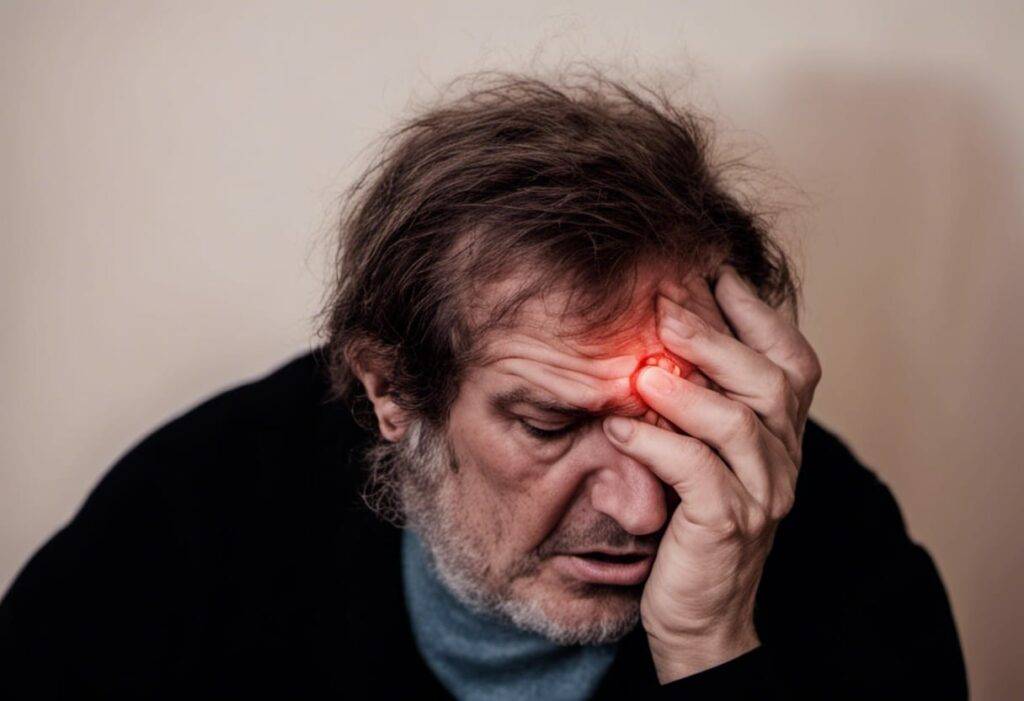
Just a little heads up: some of the links on this site may be affiliate links, which means if you make a purchase through them, we might get a little kickback. But don’t worry, it won’t cost you a cent extra! Think of it as the universe secretly thanking us for helping you find a great deal. Your support keeps the good vibes flowing.
